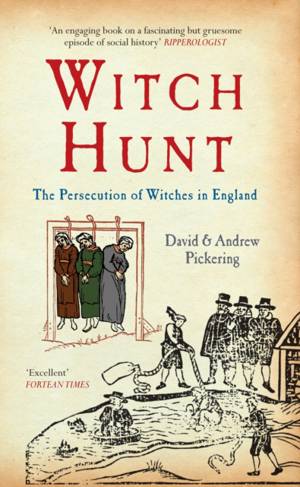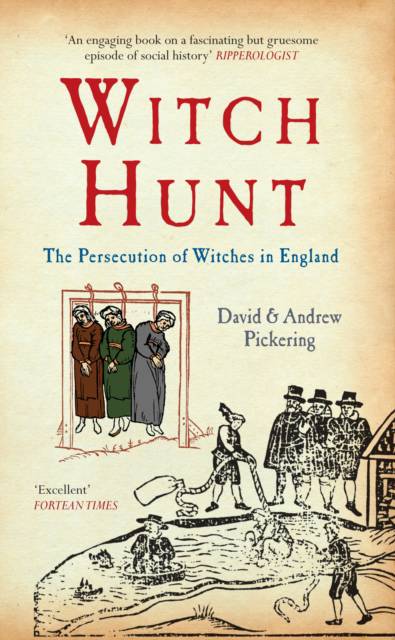
- Retrait gratuit dans votre magasin Club
- 7.000.000 titres dans notre catalogue
- Payer en toute sécurité
- Toujours un magasin près de chez vous
- Retrait gratuit dans votre magasin Club
- 7.000.0000 titres dans notre catalogue
- Payer en toute sécurité
- Toujours un magasin près de chez vous
Witch Hunt
The Persecution of Witches in England
David Pickering, Andrew Pickering
Livre broché | Anglais
15,45 €
+ 30 points
Description
It was not so long ago that the belief in witchcraft was shared by members of all levels of society. In the sixteenth and seventeenth centuries, diseases were feared by all, the infant mortality rate was high, and around one in six harvests was likely to fail. In the small rural communities in which most people lived, affection and enmity could build over long periods. When misfortune befell a family, they looked to their neighbours for support - and for the cause. During the sixteenth century, Europe was subject to a fevered and pious wave of witch hunts and trials. As the bodies of accused women burnt right across the Continent, the flames of a nationwide witch hunt were kindled in England. In 1612 nine women were hanged in the Pendle witch trials, the prosecution of the Chelmsford witches in 1645 resulted in the biggest mass execution in England, and in the mid-1640s the Witch finder General instigated a reign of terror in the Puritan counties of East Anglia. Hundreds of women were accused and hanged. It wasn't until the latter half of the seventeenth century that witch-hunting went into decline.In this book, Andrew and David Pickering present a comprehensive catalogue of witch hunts, arranged chronologically within geographical regions. The tales of persecution within these pages are testimony to the horror of witch-hunting that occurred throughout England in the hundred years after the passing of the Elizabethan Witchcraft Act of 1563.
Spécifications
Parties prenantes
- Auteur(s) :
- Editeur:
Contenu
- Nombre de pages :
- 224
- Langue:
- Anglais
Caractéristiques
- EAN:
- 9781445608617
- Date de parution :
- 15-01-13
- Format:
- Livre broché
- Format numérique:
- Trade paperback (VS)
- Dimensions :
- 127 mm x 196 mm
- Poids :
- 235 g

Les avis
Nous publions uniquement les avis qui respectent les conditions requises. Consultez nos conditions pour les avis.






